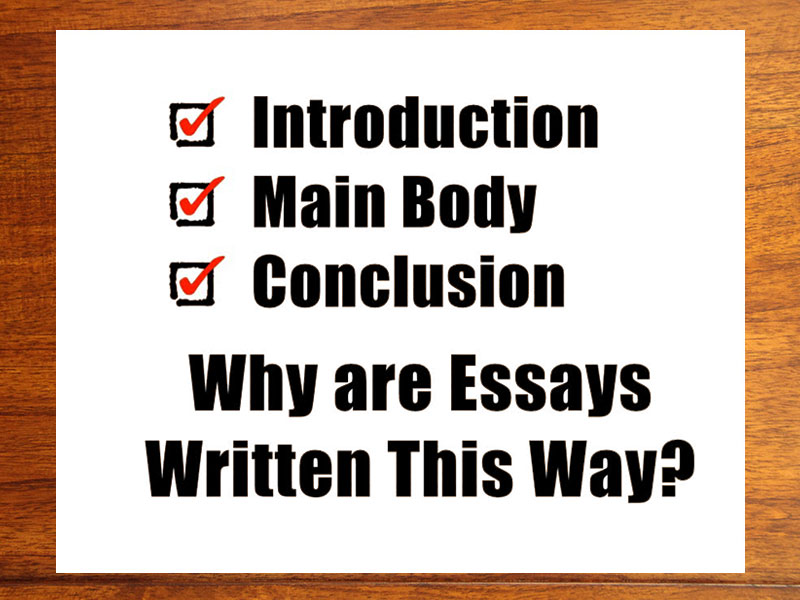
Where the essay starts
When you are writing an essay, every sentence and every paragraph is important. But there is something extra important about introductions. Just like going out on a date for the first time, you want the introduction to be just right, almost perfect. You want to put your best self forward and create a great first impression.
You should already know this, but most professors and instructors will start grading your work in their head as soon as they begin reading it. They will be sorting your essay, maybe not in terms of a grade, but most definitely in terms of strong/weak, interesting/dull, or effective/ineffective. And most will have some notion of where your essay falls on that scale before they even finish the introduction. It will be the rarest of markers who withholds judgement until the end. The introduction is something you absolutely must start strong.
Always develop an introduction that clearly sets out the aims of what you are about to write and, if applicable, refers to the subject under investigation. State what the essay will try to achieve and briefly mention some of the main points you will consider. The idea is to give the marker an overview of your argument, to show that your thought process is logical and coherent and that you have carefully thought the question through. Don’t try to go into any of your key points in depth in your introduction – they will each be covered by a full paragraph later on. If the question is an ‘either or’ or a ‘how far do you agree’ question, it is useful to set out both sides of the argument briefly in the introduction in preparation for exploring the two sides later in the essay.
Think of your introduction as a thumbnail picture of the whole essay. Anyone, but especially the marker, should know the essay subject and how you intend to prove or disprove it, just from having read just the introduction.
Take the following example:
You have been given this assignment: The main purpose of Gothic fiction is to break normal moral and social codes. Discuss.
A strong introduction should read something like this:
It is certainly true that many works of Gothic fiction manifest the transgression of normal moral and social codes as their major theme. Their emphasis on female sexuality, their breaking of the boundaries between life and death and their shocking displays of immoral religious characters would all suggest that this is indeed the case. However, it is also important to consider other major aspects of the genre that might be considered equally important in purpose, such as its fascination with the supernatural, its portrayal of artificial humanity and its satirical social attacks. This essay will explore these conflicting purposes with reference to several different Gothic texts to discover what might be best described as the ‘main’ purpose of the genre.
Reread that paragraph. Does it tell you what the topic of the essay is? What the point is? What the essay plans to do? Now, without reading think about just the size of that paragraph. If a marker were to see an introduction that were any less than that they would automatically know, without even reading a word, that the topic was not going to be well introduced. That is not to suggest you simply fill up the paragraph, but that a certain amount of information in the introduction is expected.
It is worth pointing out that in a much longer essay an introduction does not need to be limited to a single paragraph. Generally, however, it will be.

The body of your essay
The second part of the essay is the body. This is the longest part of the essay. In general, a short essay will have at least three full paragraphs; a long essay considerably more.
Each paragraph is a point that you want to make that relates to the topic. So, going back to the ‘give me more money’ example from earlier, each reason you have for deserving a raise should be a separate paragraph, and that paragraph is an elaboration on that claim.
Paragraphs, like the essay overall, also have an expected structure. You should start a new paragraph for each major new idea within your essay, to clearly show the examiner the structure of your argument. Each paragraph should begin with a signpost sentence that sets out the main point you are going to explore in that section. It is sometimes helpful to refer back to the title of the essay in the signpost sentence, to remind the examiner of the relevance of your point. Essay writing becomes much easier for you too this way, as you remind yourself exactly what you are focusing on each step of the way.
Here’s a signpost sentence example: One important way in which Gothic fiction transgresses normal moral and social codes is in its portrayal of the female heroine.
Further sentences in this paragraph would then go on to expand and back up your point in greater detail and with relevant examples. The paragraph should not contain any sentences that are not directly related to the issue set out in the signpost sentence. So you are writing an essay that clearly separates its ideas into structured sections. Going back to the wage-raise example: in the middle of talking about how punctual you are, would you start talking about how you are a good colleague, then about that client you impressed, and then talk about your punctuality again? Of course not. The same rules apply: each paragraph deals with one idea, one subject.

The end of your essay
The last section of your essay is the conclusion. In general, this will also be a single paragraph in shorter essays, but can go on to two or three for slightly longer discussions.
Every well-structured essay ends with a conclusion. Its purpose is to summarise the main points of your argument and, if appropriate, to draw a final decision or judgement about the issues you have been discussing. Sometimes, conclusions attempt to connect the essay to broader issues or areas of further study.
It is important not to introduce any new ideas in the conclusion – it is simply a reminder of what your essay has already covered. It may be useful again to refer back to the title in the conclusion to make it very clear to the examiner that you have thoroughly answered the question at hand. Make sure you remind them of your argument by very concisely touching on each key point.
Here an example of an essay conclusion:
Overall, whilst it is certainly true that the characters, plots and settings of Gothic fiction seem firmly intended to break normal moral and social codes, the great incidence within the genre of the depiction of the supernatural, and in particular its insistent reference to social injustice and hypocrisy might suggest that in fact its main purpose was the criticism and reform of society.
But where do I start???
Now you should have a solid grasp of a typical essay structure, but might not know how to actually begin structuring your essay. Everyone works differently. Some people have no trouble thinking everything out in their head, or putting together an outline, and starting with the introduction and finishing with the conclusion.
If you are not confident, however, we suggest writing from the inside out and doing the body paragraphs first. Since each body paragraph is a main idea, then once you know what your main ideas are, these should come fairly easily. Then the introduction and conclusion after that.
If you’re really struggling – or just curious – you can also look into the narrative essay writing. We can put together a comprehensive essay plan for you, which maps out your essay and outlines the key points in advance, and in turn makes the writing process much easier.
One final thought to remember: good essays are not written, they are rewritten. Always go over your first draft and look for ways to improve it before handing it in.


